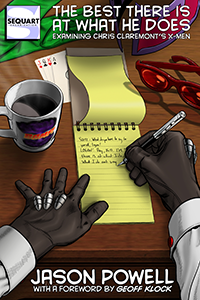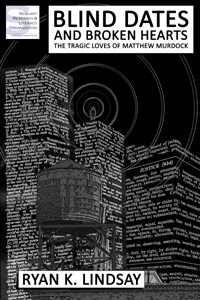From 1961 to 1965, in a white-hot blaze of publisher demand and creativity, Stan Lee, Steve Ditko, Jack Kirby, John Romita Sr. and others hammered out the entire Marvel Universe. In the process, they made comics cool to college kids, spawned a vast business empire and established themselves as the biggest and most daring name in comics. In 1963, the team that would eventually become the current face of the Marvel brand, the Avengers—“Earth’s Mightiest Heroes”—was formed and debuted in a bimonthly comic by Lee and Kirby, running for eight issues before becoming monthly and becoming a cornerstone of the MU.
But between then and now, the Avengers somehow superseded the Fantastic Four, Spider-Man and the X-Men to become the global face of Marvel. How did that happen?
Well, it has to do with the right creative team being on the book for the right time. For nearly a decade, the Fantastic Four were the sole province of Lee & Kirby, who introduced one crazy concept after another and threw them at the team, reaching a zenith of superhero comics in “The Galactus Trilogy.” WIth Spider-Man, you had a book that was incredibly weird and frenzied under Lee & Ditko and a lush, romantic soap opera under Lee & Romita. The X-Men are probably the biggest example of a Marvel concept that didn’t take root in the 1960s.
No, the Children of the Atom had to wait until a radical reinvention in 1975 under Len Wein, Chris Claremont & Dave Cockrum which basically saw the team blown up and reassembled. It was Claremont & Cockrum (& John Byrne & Paul Smith &…) who would make the Uncanny X-Men a force to be reckoned with in the ‘70s and a bestseller in the ‘80s and ‘90s. Ditto, Daredevil, which floundered under Lee & Co, but blossomed into a steadily great book in the 1980s under Frank Miller & David Mazzuchelli.
The individual members of The Avengers were, by design, the kinds of characters who (with exceptions) those who couldn’t necessarily sustain their own book. The Hulk, although not really a member, is one example. When the Avengers came on the scene, his book was gone & it was his brief tenure on the team that put him in the spotlight. Captain America & Iron Man had steady followings. Thor would be a consistent presence for the publisher and, like the X-Men and Daredevil, achieved greatness in the 1980s under writer/artist Walter Simonson.
But The Avengers itself was never a particularly famous book. The team was always important—important enough to spawn spinoffs like West Coast Avengers and the obviously ‘90s Force Works—but it didn’t start becoming the face of Marvel until 2004. Like the X-Men before them, the Avengers had to be blown up before they could be rebuilt.
And blown up they got. In 2004, writer Brian Michael Bendis (then on a hot streak with his work on Ultimate Spider-Man) and artist David Finch had the team crash in on itself in the Avengers Disassembled storyline, after Scarlet Witch went insane after remembering that her children with the Vision were actually shards of the demon Mephisto’s soul that he later took back (#BecauseComics). After falling apart, the team—and its various offshoots like the New, Secret and Dark Avengers—took center stage in the ongoing grimness of the next several years with Bendis-penned stories like Siege and Secret Invasion as well as the now-infamous Civil War. Within those stories, the Avengers and their allies take front and center stage.
In 2010 with Marvel’s “The Heroic Age” initiative, aimed at letting superheroes be heroes again, a new, adjective-less Avengers were formed and it was here that the repositioning of the team, after going through hell and back, was complete. Fast forward to right now and the Avengers are at the center of the new Secret Wars, which will completely rewrite the history of Marvel as we know it. Probably. Maybe.
So why are the Avengers Marvel’s public face? Well, it’s largely of necessity. After going bankrupt in the 1990s, Marvel as part of its restructuring sold off several of the movie rights to its characters to other studios. Blade went to New Line Cinema, Spider-Man to Sony, the Hulk to Universal, Punisher & Ghost Rider to Lionsgate and so on. Accordingly, when Marvel decided they wanted to make their own movies themselves, the deep bench of Avengers players—including Hulk who they got back after the Ang Lee film flopped—were pretty much all they had to draw on.
Now the plans for this had been seeded well before the Marvel Cinematic Universe began in 2008, but the rapid success and expansion of that is almost certainly a factor (and definitely a thought on the minds of Marvel’s parent Disney). Hence the worry that the new Marvel Universe is going to shove the Avengers & the Inhumans while putting the X-Men in a closet (which almost certainly won’t happen). So the Avengers went from a present-but-not-very-notable team to the center of one of the biggest shared universes in popular culture. And, along the way, they took comics and superhero movies to new, incredible heights.

























































Really enjoying your stuff Tom, thanks!